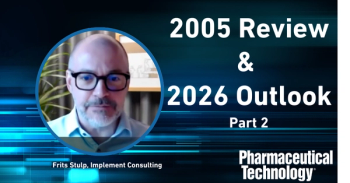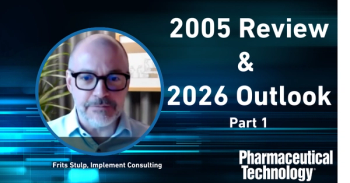
Navigating the Complexities of Drug Formulation
For the pharmaceutical industry, drug formulation is a cornerstone, crucial for converting bioactive molecules into effective, stable, and patient-friendly medications.
For the pharmaceutical industry, drug formulation is a cornerstone, crucial for converting bioactive molecules into effective, stable, and patient-friendly medications. This intricate process, pivotal in the drug development lifecycle, involves a delicate balance of scientific rigor and practical application. Formulation scientists not only need a profound understanding of the drug's properties, but also must navigate the many challenges of delivering the drug in a viable, patient-centric manner. Balancing these aspects—both scientific complexities and practical realities, like manufacturability and regulatory hurdles—is key to ensuring that drugs are not only effective, but also accessible and acceptable to patients.
Understanding drug properties
Formulation begins with an in-depth understanding of a drug's physical and chemical attributes, focusing on enhancing solubility and stability. Poor solubility can result in subpar bioavailability, rendering the drug ineffective; hence, techniques such as particle size reduction, salt formation, and solubilizing excipients—inactive substances used as carriers for the active ingredients—are employed. Stability is ensured through methods like lyophilization (freeze-drying) and the use of stabilizing agents, preserving drug efficacy.
Furthermore, maintaining stability across different pH levels is vital, considering the body's varied pH environments. Strategies such as buffer systems, protective enteric coatings to drugs, and pH modifiers are crucial. To improve bioavailability, especially for drugs with limited aqueous solubility, lipid-based formulations and nanoemulsions are increasingly used. These approaches are essential to meet the diverse challenges posed by different delivery methods, ensuring drugs perform their intended function efficiently and safely.
Delivery methods and patient-centric approaches
The pharmaceutical industry recognizes the unique challenges presented by different delivery methods, such as ensuring the efficacy of oral dosage forms, the sterility of injectables, the absorption of topicals, and the inhalation efficiency of dry powders. These forms must be carefully developed to address the specific mode of delivery, while maximizing patient compliance and comfort.
Formulation scientists are increasingly tailoring drug formulations to meet the individualized needs of patients, including considerations for age, health condition, and preferences. This patient-centric approach can manifest in forms such as orally disintegrating tablets, which are typically easy-to-swallow, effervescent tablets for the elderly, or flavor-enhanced syrups for pediatric drugs, to ensure that personalized medicine extends beyond the active ingredients to the very form and function of the medication itself.
The proactive approach in formulation
Effective drug formulation hinges on the early detection of drug instabilities, typically achieved through a series of rigorous stress tests. A step-by-step, comprehensive process enables performing of tests designed to predict and counter potential issues that can compromise a drug's solubility and stability. This proactive approach ensures the efficacy and safety of a new drug. Strategic decision-making in drug development is informed by the outcomes of these tests, guiding developers in refining the formulation process. By identifying formulation challenges early, potential setbacks in later stages of development can be avoided, which is essential for efficient and successful drug production.
This type of proactive approach involving early detection of potential instabilities is vital to ensure successful drug formulation. By exposing the drug to various conditions, such as high or low pH, heat, and intensified light exposure, scientists can assess how well the drug holds up. This early detection allows for adjustments to be made to the formulation before it progresses too far in the development process, potentially saving time, money, and resources.
A best-practice formulation strategy
The formulation of a drug is a complex process that involves multiple stages, each playing a crucial role in ensuring the safety, efficacy, and manufacturability of the final product to ensure that the target product profile is achieved. This journey begins with a thorough understanding of the drug's physicochemical properties and its compatibility with various excipients. Subsequent stages involve refining the formulation to address any potential challenges, optimizing it for manufacturing, and conducting extensive stability testing.
The stages of drug formulation from initial analysis to final optimization include:
- manufacturing stress tests and analytics: assessing the drug's response to different stresses typically encountered during the manufacturing process
- preformulation: evaluating the effects of pH and charge on the drug's solubility and stability, providing a foundation for subsequent formulation development
- pre-manufacturing optimization: aligning the formulation with process development to ensure manufacturability and stability throughout the production process
- extended stability testing: evaluating drug stability over a typical Phase I clinical trial duration, confirming the formulation's durability under various storage conditions
- freeze-thaw stress: testing the formulation's resilience against freeze-thaw cycles, a critical consideration for formulations intended for long-term frozen storage.
Throughout this multistage process, close collaboration between formulation, manufacturing, and process development teams is essential to ensure that the drug is developed and manufactured consistently, and at scale. This collaboration involves discussing process designs, validating processes, and participating in continuous improvement initiatives. By working together, these teams can optimize formulation, leading to successful drug products.
Industry-wide impact and benefits
Beyond the immediate impact on drug development, formulation has a far-reaching impact on the entire pharmaceutical industry. Advancements in drug formulation have significantly enhanced the stability of pharmaceuticals, leading to extended shelf lives. This has a ripple effect throughout the industry, particularly in logistics and inventory management. A longer shelf life reduces the need for frequent manufacturing cycles, which translates to cost savings and environmental benefits. Moreover, it ensures that patients have access to effective medications for extended periods, which is crucial in regions with limited access to regular pharmaceutical supplies.
Effective formulation plays a crucial role in broadening patient reach and ensuring compliance. By addressing issues such as solubility and palatability, medications become more patient-friendly and easier to administer. This, in turn, significantly impacts patient adherence to treatment regimens, which is particularly critical for chronic diseases that require long-term medication use. Improved formulations can also lead to the development of alternative drug delivery systems, such as transdermal patches or inhalers. These alternative delivery methods offer more options for patients who may have difficulties with traditional methods, making it easier for them to administer their medications correctly and consistently. Additionally, proper formulation can mitigate cold chain challenges by enhancing a drug's stability at a range of temperatures, reducing its reliance on strictly controlled storage conditions, making it more accessible to patients in underserved areas.
Efficient formulation strategies are also pertinent in streamlining the drug development process, leading to reduced costs and faster market entry. By identifying and addressing formulation challenges early in the development pathway, pharmaceutical companies can prevent costly late-stage failures. This efficiency not only translates to reduced development costs for the companies, but also accelerates the availability of new treatments to patients, who are eager to access lifesaving or life-altering medications.
Future trends and innovation in drug formulation
The field of drug formulation is constantly evolving, driven by advancements in technology and scientific knowledge. These ongoing advancements are influencing medicine and healthcare in many ways, from enabling the development of more effective and targeted therapies to improving patient accessibility and adherence.
Formulation advancements are also playing pivotal roles in the development of personalized medicine. By tailoring the formulation to the individual patient's needs, clinicians can optimize drug delivery and efficacy, resulting in better treatment outcomes. For example, nanoscale drug delivery systems can be engineered to encapsulate drugs and target them to specific cell types or tissues. Formulation advancements can also enable the development of new drugs that are otherwise difficult or impossible to deliver using conventional methods. For example, formulation scientists have developed innovative ways to deliver highly potent drugs and biologics, such as monoclonal antibodies and antibody-drug conjugates, which are notoriously challenging to formulate.
Formulation innovation is also essential for the development of combination therapies. These therapies combine two or more drugs to achieve a synergistic effect, resulting in improved efficacy and reduced side effects. Formulators are critical to developing formulations that are compatible with each other and can be delivered safely and effectively in combination.
As the field of medicine continues to evolve, the importance of drug formulation will only grow. With the increasing development of complex and targeted therapies, formulation scientists will play even more critical roles in ensuring that these therapies are delivered safely and effectively to patients.
Newsletter
Get the essential updates shaping the future of pharma manufacturing and compliance—subscribe today to Pharmaceutical Technology and never miss a breakthrough.




